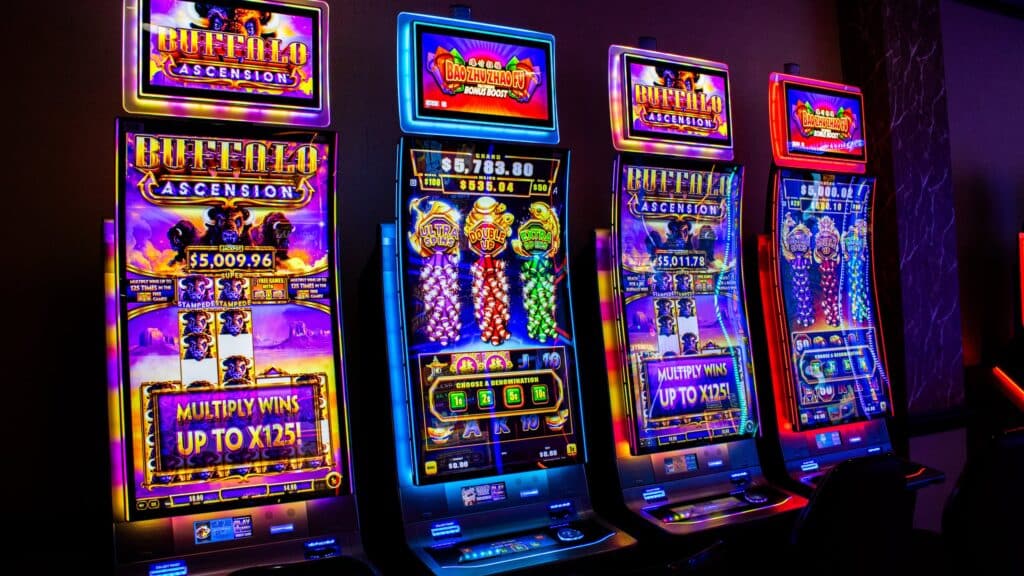Slot machines have long been a staple of the casino industry, captivating players with their simple yet thrilling gameplay. Over the years, these iconic machines have undergone a significant transformation, evolving from mechanical devices to high-tech virtual experiences. In this article, we will explore the history of slot machine technology, how these machines have evolved over time, and what the future holds for the next generation of slots.
The Birth of Slot Machines: Mechanical Reels
To understand how far slot machines have come, we first need to take a look at their origins. The first slot machine was created in 1891 by a pair of inventors, Sittman and Pitt. Their machine featured five drums with a total of 50 playing cards, and players could win prizes based on the combination of cards they landed. However, the machine didn’t offer any cash prizes—just cigars, drinks, or other bar tokens.
The real breakthrough came in 1895 when Charles Fey, a mechanic from San Francisco, created the Liberty Bell slot machine. This machine was the first true slot machine, featuring three spinning reels and a bell symbol that triggered a jackpot. The Liberty Bell was a success, and it paved the way for the slot machines we know today.
Mechanical Reels: The Standard for Decades
Throughout the early 20th century, mechanical slot machines dominated the casino landscape. These machines relied on intricate mechanical components to spin the reels and determine outcomes. Players would insert coins, pull the lever to spin the reels, and hope to land a winning combination of symbols. The odds were determined by the physical arrangement of symbols on the reels.
One of the most notable innovations of the mechanical slot era was the introduction of the "one-armed bandit" lever. This iconic lever was used to initiate the spin, and it became synonymous with slot machines. Players would eagerly pull the lever, watching the reels spin and hoping for a jackpot to land on the payline.
Examples of Popular Mechanical Slots
- Liberty Bell: The original slot machine, featuring three reels and a single payline.
- Fruit Machines: A popular variation in the UK, featuring fruit symbols like cherries, lemons, and plums.
- Double Jackpot: A mechanical slot machine that offered multiple jackpots for different combinations.
The Digital Revolution: The Rise of Video Slots
In the 1970s and 1980s, the advent of digital technology marked the beginning of a new era for slot machines. The mechanical reels were replaced with digital screens, and the physical mechanisms that powered the reels were replaced by electronic components. This allowed for greater flexibility in game design, including the ability to add multiple paylines, bonus rounds, and interactive features.
Video slot machines first appeared in casinos in the late 1970s, but it wasn’t until the 1980s that they began to gain widespread popularity. The first video slot machine, called "Fortune Coin," was developed by the company International Gaming Technology (IGT) in 1976. The game featured a 19-inch screen and allowed for multiple paylines, which were not possible on mechanical machines.
Video Slots: The Introduction of Multiple Paylines and Bonus Features
Video slots represented a massive leap forward in slot machine technology, thanks to the inclusion of video screens and microprocessors. These innovations opened up a world of possibilities for game developers, allowing them to create more dynamic and engaging games. Video slots typically feature five reels, although some can feature up to 7 or more reels, offering players an array of ways to win.
Video slots also introduced the concept of multiple paylines, where players could win prizes by landing matching symbols on more than one line. This greatly increased the number of potential winning combinations, making the game more exciting and rewarding for players.
Additionally, video slots introduced the concept of bonus features, such as free spins, mini-games, and interactive elements. These features added layers of excitement to the gameplay and allowed for greater player engagement. Popular themes, such as movies, TV shows, and historical events, also became a staple of video slot machines, further enhancing the gaming experience.
Examples of Popular Video Slot Games
- Wheel of Fortune: A classic video slot game that became an iconic part of casino history.
- Buffalo: A video slot game known for its high payouts and engaging bonus features.
- Starburst: A popular video slot game that features simple mechanics and vibrant visuals.
The Emergence of Online Slots
The rise of the internet in the late 1990s opened up a new frontier for slot machine technology. Online casinos began to emerge, allowing players to experience slot machines from the comfort of their own homes. This marked a significant shift in the gambling landscape, as players no longer had to travel to a brick-and-mortar casino to enjoy their favorite games.
Online slots are built on the same basic principles as traditional video slots, but they offer additional benefits, including accessibility, a wider variety of game themes, and the ability to play for real money or for free. Online slots also introduced the concept of progressive jackpots, where the prize pool grows over time as players continue to make wagers on the game.
The Role of Software Developers in Online Slots
Software developers play a key role in shaping the online slot experience. Companies like Microgaming, NetEnt, Playtech, and IGT have been at the forefront of online slot innovation, creating some of the most popular and beloved titles in the industry. These developers are responsible for designing the game mechanics, visuals, sound effects, and special features that make online slots so engaging.
One of the major advancements in online slots has been the introduction of HTML5 technology. This allows online slots to be played seamlessly across a range of devices, including desktop computers, smartphones, and tablets. The ability to play slots on the go has significantly contributed to the popularity of online slots in recent years.
Examples of Popular Online Slots
- Mega Moolah: A progressive jackpot slot known for its massive payouts and African safari theme.
- Gonzo’s Quest: A slot game that combines adventure with innovative features, such as avalanche reels and free spins.
- Dead or Alive: A high volatility slot game with a Wild West theme and the potential for huge wins.
The Impact of Mobile Slots
With the advent of smartphones and mobile gaming, the next phase in the evolution of slot machines began. Mobile slots allow players to take their favorite games with them wherever they go, making it easier than ever to enjoy slot gaming on the move. Mobile slots are built using the same technologies as online slots but are optimized for smaller screens and touch-based controls.
The rise of mobile slots has had a significant impact on the gambling industry, with a growing number of players opting to play their favorite games on their mobile devices. This shift has led to the development of mobile-optimized slot games, which feature responsive designs, intuitive interfaces, and enhanced graphics that work seamlessly on smartphones and tablets.
Mobile Slot Features and Benefits
- Portability: Mobile slots allow players to enjoy their favorite games anytime, anywhere, as long as they have an internet connection.
- Touchscreen Controls: Mobile slots are designed to be played with touch-based controls, making it easy to spin the reels and interact with bonus features.
- Bonus Offers: Many online casinos offer mobile-exclusive promotions and bonuses for players who choose to play on their smartphones.
The Future of Slot Machine Technology
Looking ahead, the future of slot machine technology is incredibly exciting. With advancements in artificial intelligence (AI), virtual reality (VR), and augmented reality (AR), the next generation of slot games promises to be more immersive and interactive than ever before.
AI-powered slots will be able to adapt to individual players’ preferences, offering personalized experiences and dynamically adjusting gameplay based on the player’s behavior. VR and AR technology will bring slot machines to life in new ways, allowing players to experience virtual casino environments or interact with 3D objects and characters within the game.
Potential Innovations in Slot Machines
- Virtual Reality Slots: VR technology could transport players into fully immersive virtual casino environments, where they can interact with slot machines in a 3D space.
- AI-Driven Games: Artificial intelligence could be used to tailor slot game experiences based on player behavior, creating more engaging and dynamic gameplay.
- Blockchain Integration: Blockchain technology could revolutionize slot machines by offering decentralized, transparent, and secure gaming experiences with provably fair outcomes.
Conclusion: The Ever-Advancing World of Slot Machines
From their humble beginnings as mechanical machines with a single payline to the high-tech video and mobile slots of today, slot machines have come a long way. The evolution of slot machine technology has brought about exciting innovations that have changed the way players experience the game. As technology continues to advance, we can expect even more exciting developments in the world of slots, including AI-driven games, VR experiences, and blockchain integration.
Whether you’re a new player or a seasoned pro, understanding the history and evolution of slot machines can deepen your appreciation for these iconic games and enhance your overall gaming experience. The future of slots is bright, and we can’t wait to see what innovations the next generation of slot machines will bring.



